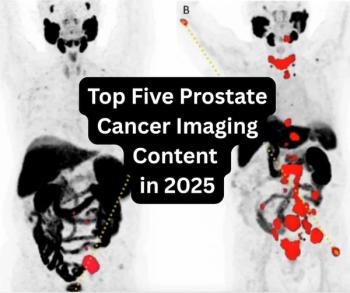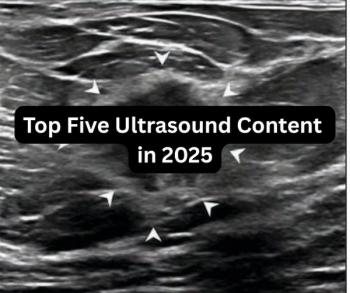For patients with T1NoMo papillary thyroid carcinoma (PTC), five-year outcome data reveals low recurrence and complication rates and no cases of lymph node metastasis after the use of ultrasound-guided thermal ablation.
For a new meta-analysis, recently published in Academic Radiology, researchers reviewed data from six studies and a total of 2,229 patients who had ultrasound-guided thermal ablation to treat T1NoMo papillary thyroid carcinoma. The types of ablation in the reviewed studies included radiofrequency ablation (RFA), microwave ablation (MWA) and laser ablation (LA), according to the meta-analysis.
During a mean pooled 66-month follow-up period, the study authors found only 2 percent recurrence for local PTC tumors and no evidence of new cancers nor lymph node metastasis.
“Our study results indicate thermal ablation is a safe and effective method to treat PTC. More importantly, compared with surgery, there are nearly no reports of thyroid and parathyroid injury after thermal ablation. None experienced LN metastasis, local tumor recurrence after ablation treatment was only 2% and only three patients underwent surgery, during follow-up,” wrote lead study author Jing Li, M.D., who is affiliated with the Taian Hospital of Traditional Chinese Medicine at the Shandong University of Traditional Chinese Medicine Affiliated Hospital in Shandong, China, and colleagues.
While the researchers noted a 6 percent incidence of complications with ultrasound-guided thermal ablation, they were minor in nature, ranging between hematomas to transient voice changes.
Three Key Takeaways
1. Low recurrence and no metastasis. Thermal ablation showed a local recurrence rate of only 2 percent over a mean follow-up of 66 months, with no cases of lymph node metastasis or new cancer development among 2,229 patients.
2. Minimally invasive with fewer complications. Compared to surgery, thermal ablation resulted in nearly no thyroid or parathyroid injury, and only 6 percent of patients experienced minor complications (e.g., hematoma, transient voice changes), all resolving within six months.
3. Viable surgical alternative for low-risk PTC. The findings suggest that ultrasound-guided thermal ablation (RFA, MWA, LA) is a safe and effective long-term treatment option for low-risk PTC, potentially avoiding the risks associated with thyroid surgery.
“All complications were fully recovered within 6 months. Taken together, these results indicate that thermal ablation is safe and effective for long-term control of low-risk PTCs,” noted Li and colleagues.
Cautioning that future prospective studies are necessary to confirm the results, the study authors maintained that ultrasound-guided thermal ablation may emerge as a viable alternative to surgery, which can expose patients to post-op complications including hypothyroidism and parathyroid gland injury.
(Editor’s note: For related content, see “Ultrasound-Based Nomogram May Enhance Risk Stratification for Thyroid Nodules with Peripheral Calcifications,” “AI Boosts Ultrasound AUC for Predicting Thyroid Malignancy Risk by 34 Percent Over TI-RADS” and “FDA Clears Enhanced 3D Ultrasound Platform for Thyroid Imaging.”)
In regard to study limitations, the meta-analysis authors acknowledge the small number of studies. They also conceded variable methods of ablation in the reviewed studies as well as different ultrasound modalities.





























